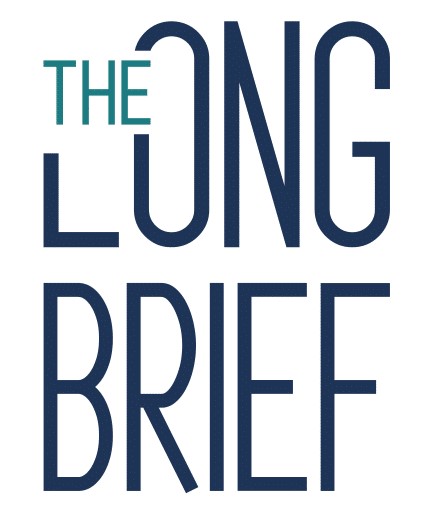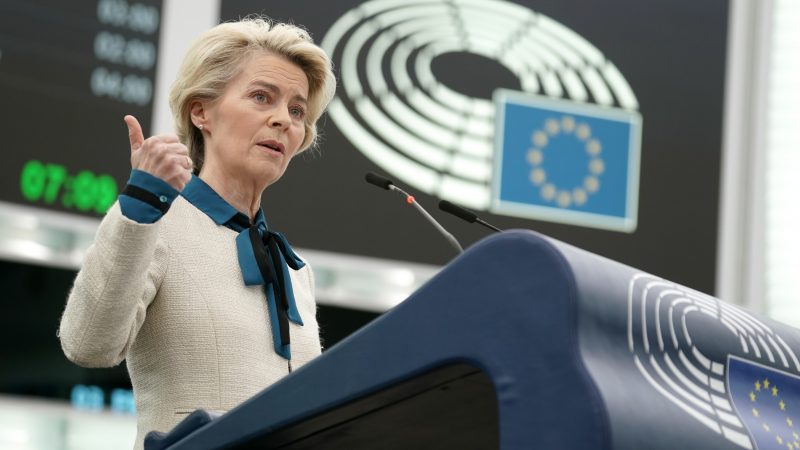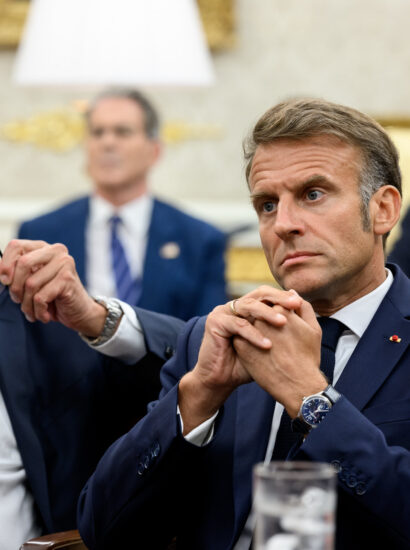An article originally published by Undark on March 1st written by Paul Hockenos
The passage of last year’s $369 billion Inflation Reduction Act, which despite its name is essentially a climate protection bill, was remarkable for its suddenness and sheer magnitude. In one stroke, it jacked global climate policy to another dimension, solidified the US as a pacesetter on climate action, and showed the public sector’s willingness to undertake heavy lifting on a scale that had previously been inconceivable.
But the Inflation Reduction Act, or IRA, is also notable for its strategic approach. In the form of generous tax incentives, grants, and loan guarantees, it makes available hundreds of billions of dollars to directly subsidize American industry’s buildout of renewable energy sources, electrification, electric cars, hydrogen technology, and other green tech. Rather than capping and pricing carbon emissions to curb greenhouse gas emissions — and using that revenue to spur the economy’s green transformation — the US is wagering that it can spend its way to a clean energy economy: that a big-enough carrot, in other words, will work as well or better than a stick. In that way, the IRA has “redefined the terms of the debate,” as Toby Couture, director of the Berlin-based consulting firm E3 Analytics, told me.
Now it appears the EU may be coming around to the American way of thinking. In January, European Commission President Ursula von der Leyen proposed a Green Deal Investment Plan that could free up hundreds of billions of euros in public and private climate investments over the next decade. The plan would dramatically simplify regulations for net-zero products — that is, products that on a whole don’t put more carbon into the atmosphere — as well as enable tax breaks for green industries, improve access to critical raw materials, and allow more aid from EU member states to flow into clean tech and its deployment. The plan wouldn’t supplant the emissions pricing system that has been in place in Europe for nearly two decades, but rather complement it.
Still, the EU plan, taken together with the IRA, signals a critical ramping up of climate strategy. With these big-ticket, landmark climate measures, the Western heavyweights seem to be acknowledging a fundamental truth of climate policy today: The global economy as we know it will have to change to accommodate and expedite the low-carbon transformation, not the other way around.
That is not to say, of course, that subsidies and incentives are a panacea. One downside of investment-driven climate policy: It has a protectionist element. A key provision in the IRA, one that is sowing discord in the EU and beyond, stipulates that only companies in the US or in countries with which the US has a free trade agreement are eligible to receive certain incentives. (The EU is not included.) This looks like a clear case of old-fashioned, America-first industrial policy, and indeed some American legislators intended it thus — to decrease the country’s dependence on clean tech resources from China, which currently leads globally in clean energy investment and deployment. It is almost certainly also a contravention of World Trade Organization’s rules on trading without discrimination, which may have to be tweaked to accommodate it. So lush are the IRA’s incentives that the EU may fear that some European companies will relocate to the US, costing the continent jobs as well as its edge in green technology.
But carbon pricing policy can be protectionist too. Europe’s pricing scheme, for instance, now includes a Carbon Border Adjustment Mechanism that, after it takes full effect in 2026, will tax trade goods entering the EU from countries that don’t penalize emissions. This policy is meant to level the playing field and earn the bloc more revenue for its disadvantaged industries – but this, too, could be called protectionism.
Perhaps the biggest critique of investment-driven climate policies like the IRA is that they don’t exert direct pressure on the fossil fuel industry and other emissions-intensive industries to change or shut down. Rather, the hope is that cheaper, subsidized clean technology will eventually prompt the ancien régime to limp away from the stage.
The school of thought in Europe has largely been that an effective emissions pricing system is fairer to smaller, less well-heeled countries, and better suited than subsidies to expedite progress toward the target of net-zero greenhouse gas emissions by 2050. For the past 18 years, the continent has implemented a cap-and-trade system that prices emissions by the ton for the power, manufacturing, and airline industries. (A similar regime will also soon apply to road transport, maritime transport, and buildings.) And, indeed, the EU has slashed its emissions by 41 percent since 2005, compared with just a 15.5 percent drop in the US over the same period.
From the start, however, there were kinks in Europe’s pricing system that shielded the big emitters, and most experts agree that the circuitous, complicated system has logged disappointing results so far. The extent to which carbon prices were responsible for the drop in total greenhouse gas emissions is debatable, and many economists chalk up the falling emissions at least partly to innovation and price supports that spurred important technology breakthroughs in renewable energy, electric mobility, and battery storage. Only as the price the per ton of carbon continues to rise — as it has significantly since 2021 — and policy loopholes are tightened will carbon pricing assume the muscle to push coal, gas, and oil out of the market, experts say.
Ultimately, the biggest lesson of the EU’s new Green Deal Investment Plan may be that it is possible — indeed necessary — for the carrot and the stick to work together: The former constitutes a more direct means of stimulating investment, the latter of slashing emissions.
To some extent, this is already happening on both sides of the Atlantic. Several states on both coasts of the US have already implemented their own carbon pricing mechanisms, and Europeans have already doled out liberal shares of state aid in sectors like renewable energy production. But the scales of these efforts will have to grow even further to match the magnitude of the climate problem.
It is also imperative that these countries don’t allow protectionists instincts to escalate and ignite a full-fledged trade war across the Atlantic and beyond. Smaller EU states and those in the Global South cannot hope to keep up should a green subsidies race break out among the heavyweights.
But the EU and US seem to be cognizant of those risks: They’ve developed a joint task force that is building exceptions for European companies into the IRA, and the Biden administration has already backpedaled on a provision that would have prevented European firms from benefitting from a commercial-vehicle tax credit.
With the Green Deal Investment Plan now on the table, the ball is in Europe’s court. This may be the bloc’s moment to match what the US is envisioning for the IRA — or even surpass it if they are smarter and more strategic about how they target subsidies. The plan’s passage would announce a new age of whatever-it-takes, state-sponsored climate protection, the next logical step in finally taking climate breakdown seriously.
Paul Hockenos is a Berlin-based writer who covers energy and climate topics.
This article was originally published on Undark. Read the original article.








